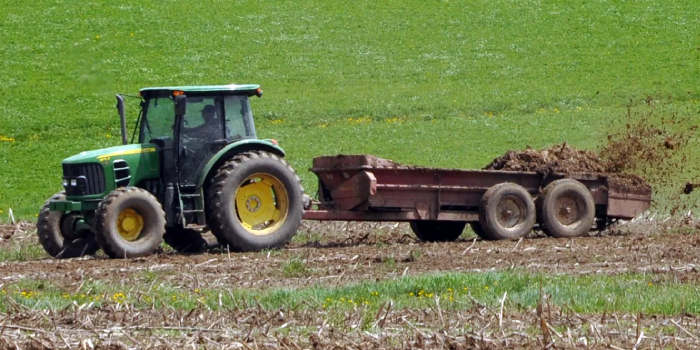Should Manure be Applied to Alfalfa?

Manure contains valuable nutrients such as nitrogen, phosphorus and potassium, some of which is tied up in a slow-release form that can benefit the soil for years forward. There are some drawbacks to applying manure on alfalfa.
By Jeff Burbrink
Ag & Natural Resources Extension Educator, Purdue Extension LaGrange County
LAGRANGE — Just 50 years ago, people referred to manure as animal waste, a term I do not hear much anymore. Today, I think most people are aware that animal manure has value as a fertilizer. Whether you are a farmer or gardener, you are probably aware that manure contains valuable nutrients such as nitrogen, phosphorus and potassium, some of which is tied up in a slow-release form that can benefit the soil for years forward.
There are times of the year, typically after the crops are planted, that finding a place to apply the manure can be difficult. That is one reason why so many people now design their manure storage areas to hold six months’ worth of manure. Despite that, we sometimes are asked if manure can be applied to alfalfa after a cutting is removed. It would seem that alfalfa and manure might work well together, but there are some drawbacks.
One observation is that manure applications to alfalfa ground tends to increase issues with competitive plants, particularly grasses. As a legume, alfalfa has the ability to produce its own nitrogen, so we rarely have a need to apply N to alfalfa fields. When nitrogen is applied to alfalfa via manure, the grasses tend to benefit from the added N, and that can reduce the useful life of the alfalfa stand.
Manure added to an alfalfa field can provide some benefit in fields where the soil tests are low in potassium and phosphorus. A lab analysis can determine what the nutrient levels in the manure are, and help you make a decision how much to apply based on crop needs. However, I should note that alfalfa is a crop that is difficult to establish on low nutrient soils, and the crop would probably benefit more from manure applied before the alfalfa is seeded.
Some research has shown that alfalfa can be damaged from a buildup of salts due to manure applications, and the palatability of the feed can be reduced. If you must apply to hay ground, the manure is best hauled within five days of cutting. The soil should be firm, because wet soils are easily compacted by the weight of full manure spreaders.
Since applying manure to alfalfa has both advantages and disadvantages, perhaps the best practice is to apply manure to only older stands of alfalfa, stands that are 50% or more grass already, or stands that within a year or so from being plowed under.
Of course, if you are currently running short of land to apply manure, it is important to keep the manure stored in a safe and courteous manner. Nutrients belong on the land, not in our streams or ditches. You would not think twice about applying commercial fertilizer where it is sure to runoff, so why treat nutrient rich manure that way? It is good stewardship to manage manure in a way it can be utilized later when land opens up for proper application to the soil.

